by Karin Carlson
Northeast Historic Film
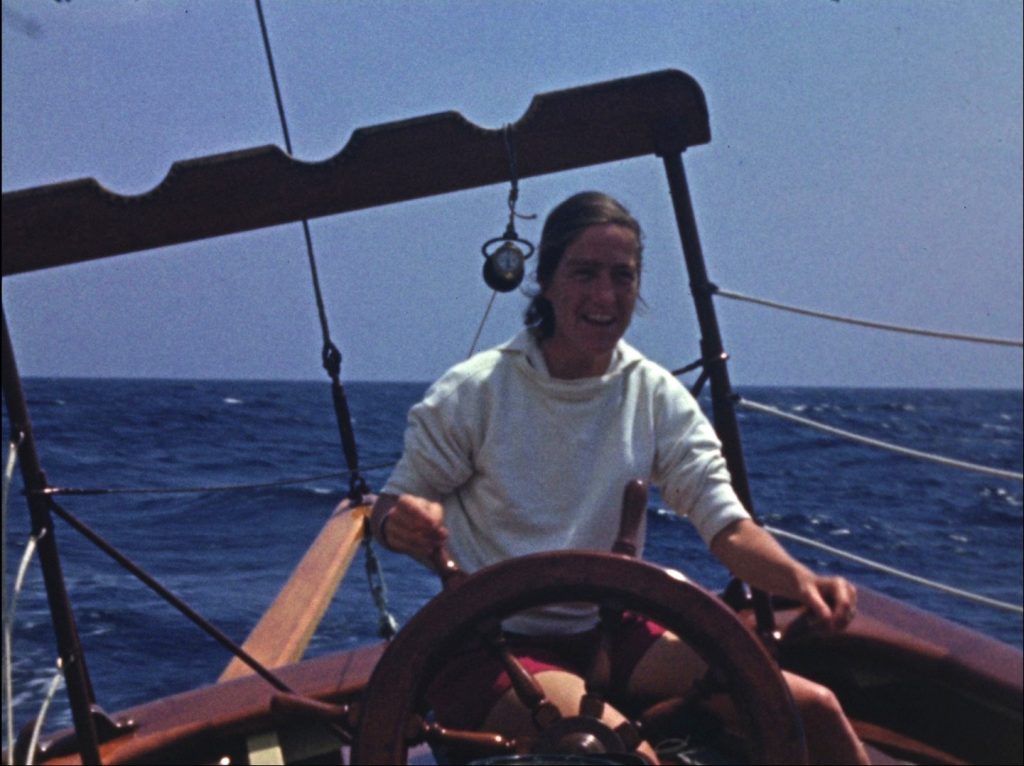
Dorothy at the helm of the family yacht, Nordlys, 1938.
One of the best parts of processing a film collection is learning about the person who shot it. It is captivating to see old footage of exotic and familiar places and to watch families grow up on film. Watching a family’s home movies is a glimpse into the others’ lives. Once you learn more about the filmmaker and their life it adds context to these already fascinating images.
One collection that I had been looking forward to learning more about was the Dorothy Stebbins Bowles Collection. This collection was donated to NHF by one of Dorothy’s daughters a couple years ago and was one of the inspirations for the Woman Behind the Camera Project. Ever since it came into the archive and I read a little bit about Dorothy, or Steb as her friends called her, I have wanted to delve deeper into these films and the woman who made them. This grant finally gave me that opportunity.
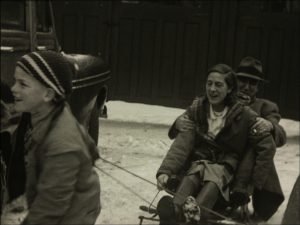
Dorothy and Chester on a sled being pulled by their son Sam. Essex, CT 1947
Dorothy was born in 1908 in Brookline, MA. Her father owned a logging business and her mother was an accomplished musician. She went to Vassar and then got a graduate degree at Smith in social work and psychology. She travelled around the world and made two silent amateur films with her friends before meeting her husband Chester Bowles. Chester, or Chet, was appointed the head of the Office of Price Administration by President Franklin D. Roosevelt, worked in both the FDR and Kennedy administrations, was the governor of Connecticut for a term, and the ambassador to India and Nepal twice. Through all this Dorothy was at his side helping him in his political life while also raising their 5 children. Chet had been married before and brought two children with him into the marriage, and then Dorothy and Chet had three more.
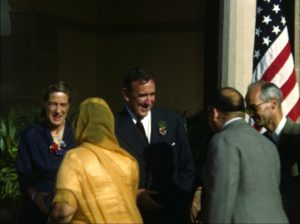
Dorothy Stebbins Bowles and her husband Ambassador Chester Bowles greeting guests at the US Embassy in India, 1952.
Dorothy was heavily involved in politics (sometimes clashing with her husband), the civil rights movement, and the promotion of Indian culture. She was active at home, in the community, and in her husband’s politic sphere. She was bipolar and suffered severe bouts of depression through her life. The more I discover about her the more I see what an amazing woman she was.
I was able to get extra insight into these films by travelling to the Schlesinger Library at Harvard where the Dorothy Stebbins Bowles papers are kept. They begin with Dorothy’s 8-month trip around the world in 1927-1928. Reading letters that she wrote home during this trip I was able to identify many of the people and places that appeared in the films. I also gained some extra insight with Dorothy writing home about things that don’t appear in the films like dancing with men on one of the ships, exploring Hong Kong society, and having dinner with a Maharishi. She started out the trip with her friend Katherine Wharton, travelled alone for a bit, and then met up with her mother and sister in Europe. Dorothy travelled through Japan, China, Thailand, India, and Southeast Asia at a time when colonialism still existed in this part of the world. In her letters she compares the Dutch colonies in Java and Bali to French Thailand and British Hong Kong and India. A civil war was raging through China while she was there and she describes her tourist activities being cut short due to troop movements. Her letters and these films offer a fascinating look into a world that no longer exists.
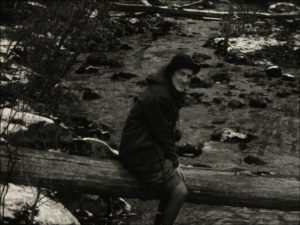
Dorothy taking a winter walk through the woods with her step-children. Essex, CT 1936
The films in the collection span 1927 to 1965 and offer an interesting juxtaposition between the Bowles family home life and their political life as well as introducing a unique cast of characters. A 1933 trip to Morocco features Helenka Adamowska Pantaleoni, a 1920’s stage and film actress who went on to help found UNICEF USA and serve as the president of the organization for 25 years. Also appearing in the films are Eleanor Roosevelt, Indira Gandhi, Jawaharlal Nehru (first prime minister of India), Rajendra Prasad (first president of India), and King Tribhuvan of Nepal. Scenes of diplomatic meetings in India are interspersed with sailing trips and the family playing in the backyard. One section of films feature Dorothy, Chester, and three of their children on a plane, trains, and finally ponies over the Himalayas on what was one of the first diplomatic trips to Nepal.
Despite the exotic locations and presence of political figures the films also chronicle the normal lives of this family. It is wonderful to watch Dorothy grow and change during the almost 40 years captured on film. At the beginning we see a 19 year old woman traveling the world and making films with her friends, and then watch her get married and have children and host both children’s birthday parties and political galas in her backyard. We get to see her children grow up and have children of their own. It is a glimpse into the life of a fascinating woman and I am grateful for the chance to view that life through her eyes.
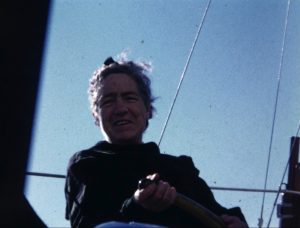
Dorothy sailing, 1958
